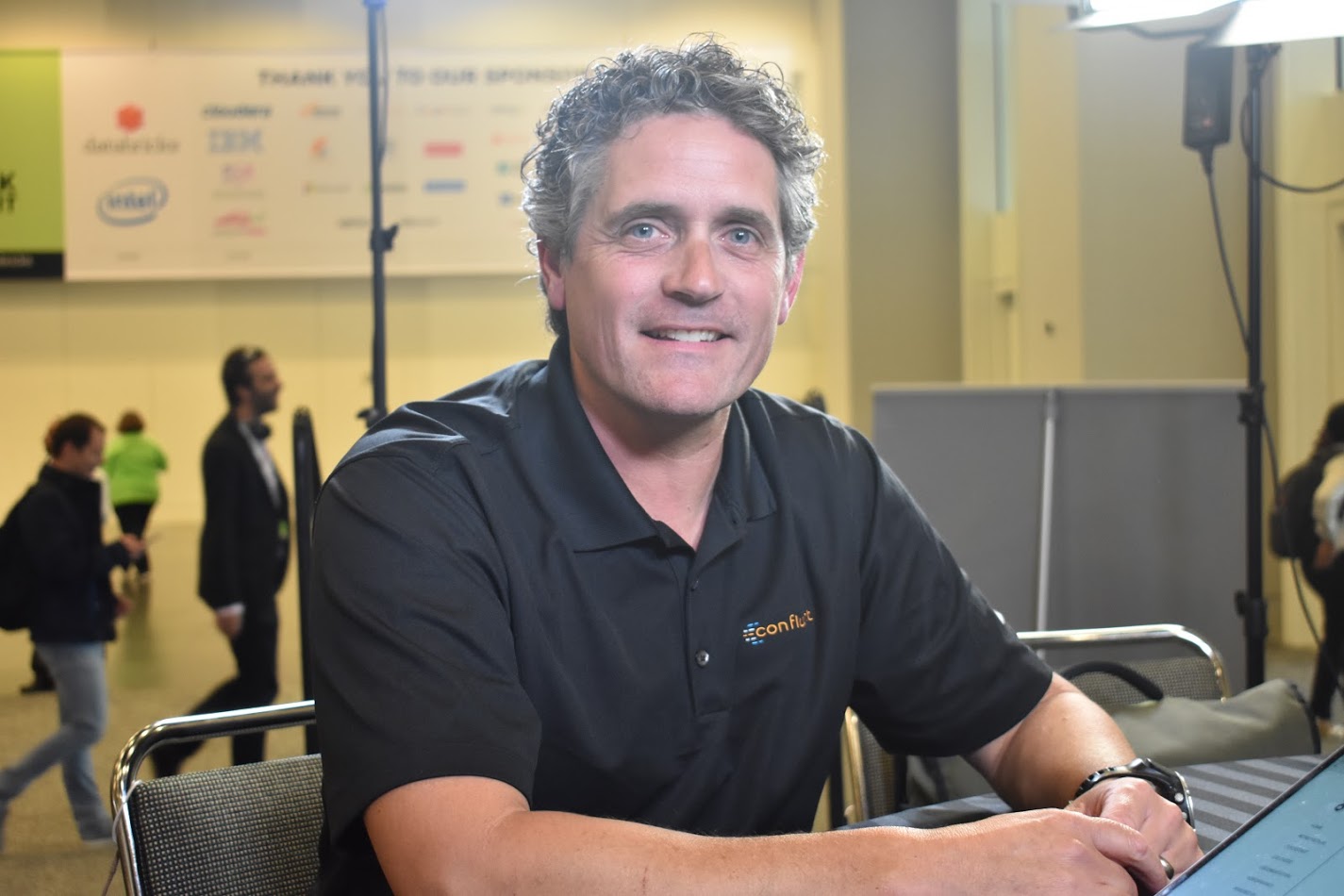 BIG DATA
BIG DATA
 BIG DATA
BIG DATA
 BIG DATA
BIG DATA
Where data processing is concerned, speed is life. Companies can ship off some workloads to batch processing, but they need to process the critical stuff in real-time while a customer or system interaction is happening. Not all companies have the resources to make this happen, however. That’s where big data company Confluent Inc. and distributed data streaming platform Apache Kafka step in.
“We’ve done a lot to enable customers to adopt Confluent in the cloud,” said Clarke Patterson (pictured), the former senior director of product marketing at Confluent.
Patterson was speaking to David Goad (@davidgoad) and George Gilbert (@ggilbert41), co-hosts of theCUBE, SiliconANGLE’s mobile livestreaming studio, during this year’s Spark Summit in San Francisco, California. They discussed how Kafka, the open-source platform whose creators founded Confluent, can improve data processing. (* Disclosure below.)
To boost its presence in the cloud, Confluent came up with a Confluent Cloud offering, which is a managed service of its Confluent platform. It fits a need for cloud-first or operations-starved companies who want to operationalize Kafka. The Confluent Cloud service allows users to apply Kafka with Confluent as the backstop.
Two recent advancements make this a valuable service, Patterson explained. One is Kafka’s new ability to connect and integrate large numbers of data producers and consumers as information flows through. The second is a Kafka API that powers streaming processing and is built into the system. This allows companies to perform lightweight data transformations while the data is moving.
By comparison, data integration used to be about collecting a lot of data from a bunch of systems, transforming it and then shipping it off to some other place in the business. Now speed is vital, both for data and application integration, Patterson stated. For many workloads, Kafka can provide both speed and the capacity to process large amounts of data in real-time.
“We see a lot of people that are going into microservices-oriented architecture,” Patterson said. That means moving away from monolithic applications that are hard to change. By splitting up into smaller, functional components, they can then integrate these microservices much faster. Kafka provides a way to connect all those pieces, he concluded
Watch the complete video interview below, and be sure to check out more of SiliconANGLE’s and theCUBE’s coverage of Spark Summit 2017. (* Disclosure: DataBricks Inc. sponsored this Spark Summit 2017 segment on SiliconANGLE Media’s theCUBE. Neither DataBricks nor other sponsors have editorial control over content on theCUBE or SiliconANGLE.)
THANK YOU